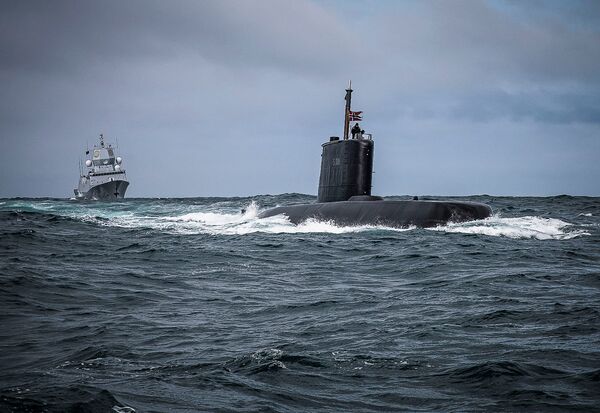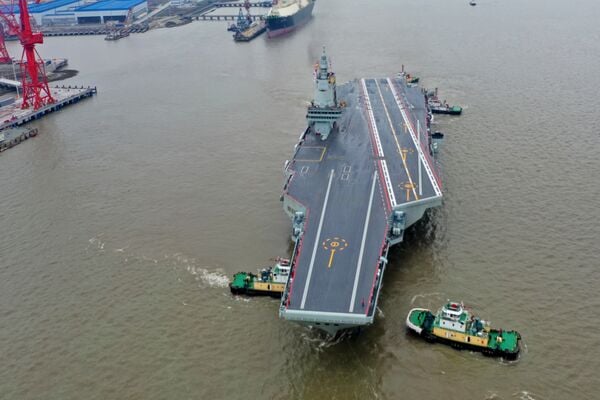- About
- Intara
- Capabilities
- Advisory
- Resources
- News
- Store
Norway's defence chief recommends increasing RNoN submarine and frigate numbers
09 June 2023
by Dr. Lee Willett


The RNoN Ula-class submarine, HNoMS Utsira (foreground), and Fridtjof Nansen-class frigate HNoMS Otto Sverdrup operate together during NATO's ‘Dynamic Mongoose' anti-submarine warfare exercise in the North Atlantic in 2020. Under the defence chief's recommendations, Norway could expand both its submarine and surface fleets. (NATO Maritime Command Flickr feed)
Norway's Chief of Defence General Eirik Kristoffersen has called for an increase in the Royal Norwegian Navy's (RNoN's) submarine and frigate force levels within wider recommendations regarding the future structure of the Norwegian Armed Forces.
Gen Kristoffersen has also recommended a rationalisation of the navy's overall surface force structure, including to provide greater mass at sea.
Norway's Ministry of Defence published The Military Advice of the Chief of Defence 2023 on 7 June, following a government request in November 2022 for recommendations on how the armed forces should be structured.
“The armed forces must maintain their ability to inflict losses on an adversary, both on their own and alongside allies,” the defence chief's report said. “To ensure sufficient firepower and mobility, the armed forces must retain a core set of capabilities.” Such capabilities include submarines and frigates, the report added.
France orders first long-lead items for PA-NG carrier
03 May 2024
by Kate Tringham


An artist's impression of the French Navy's PA-NG next-generation carrier. (MO Porte Avions)
The French defence procurement agency (Direction Générale de l'Armement: DGA) has placed the first order for long-lead items for the country's future Porte-Avions Nouvelle Génération (PA-NG) next-generation nuclear-powered aircraft carrier (CVN), the French Ministry of the Armed Forces has confirmed.
In a 30 April announcement, the French defence ministry said the DGA had awarded a contract worth EUR600 million (USD642.7 million) to the PA-NG programme's industrial prime contractor MO Porte-Avions (a joint venture of Naval Group and Chantiers de l'Atlantique), and nuclear reactor developer TechnicAtome, covering the provision of long-lead elements related to the ship's nuclear propulsion, namely the K-22 nuclear reactors, their containment structures, and steam generation machinery.
The contract paves the way to start manufacturing these elements, with work expected to continue from 2024 to 2029 in advance of the start of construction of the aircraft carrier, the defence ministry said.
China's third aircraft carrier begins maiden sea trials
02 May 2024
by Ridzwan Rahmat


China's third aircraft carrier, seen here as it embarked on its maiden sea trials on 1 May 2024. (Pu Haiyang/VCG via Getty Images)
China's third aircraft carrier has embarked on its maiden sea trials, state-controlled Xinhua News Agency announced in its report on 1 May.
The carrier, Fujian , left the Jiangnan Shipyard in Shanghai at around 0800 h local time on the day of the announcement. These trials will primarily focus on testing the “reliability and stability of the aircraft carrier's propulsion and electrical systems”, reads the Xinhua report.
“Since its launch in June 2022, the Fujian has completed its mooring trials, outfitting work, and equipment adjustments. It has met the technical requirements for sea trials,” the report added.
Fujian was launched by Jiangnan Shipyard in June 2022. It is slated to be the People's Liberation Army Navy's (PLAN's) third aircraft carrier overall, but it is the service's first vessel to be configured for catapult-assisted take-off but arrested recovery (CATOBAR) aircraft operations.
New labour deal touted as possible pathway for national workforce model for naval ships
01 May 2024
by Michael Fabey


The US Navy has begun to improve its current public shipyards, such as the Portsmouth Naval Shipyard, shown here. (US Navy)
A new labour agreement signed on 29 April that seeks to build a rotational workforce of skilled welders could eventually serve as template for a national workforce arrangement for work on naval ships, according to Edward L Bartlett Jr, founder and CEO of Bartlett Maritime Corporation (BMC) – the company that brokered the deal.
The impetus for the rotational welders was a plan to use such a workforce to work on naval ships in Charleston, South Carolina, Bartlett told Janes in an interview on 29 April.
BMC hopes to prove out the concept through the recentlysigned labour deal and similar follow-on agreements. BMC has also proposed to construct and operate component repair facilities in northeast Ohio with an option to build a new public naval shipyard in Charleston.
Norway's Chief of Defence General Eirik Kristoffersen has called for an increase in the Royal Norweg...
Latest Podcasts
Using OSINT to support law enforcement
Ritu Gill, Intelligence Analyst, joins Harry and Sean to discuss the practical use of OSINT to support law enforcement. Ritu discusses it’s use in supporting risk assessments and classified or closed sources of intelligence. She also discusses t...
Listen nowJanes Case Studies
Using Janes Intara to build a common intelligence picture: Russian build up on the Ukrainian border
View Case StudyNews Categories
 Security Details
Security Details